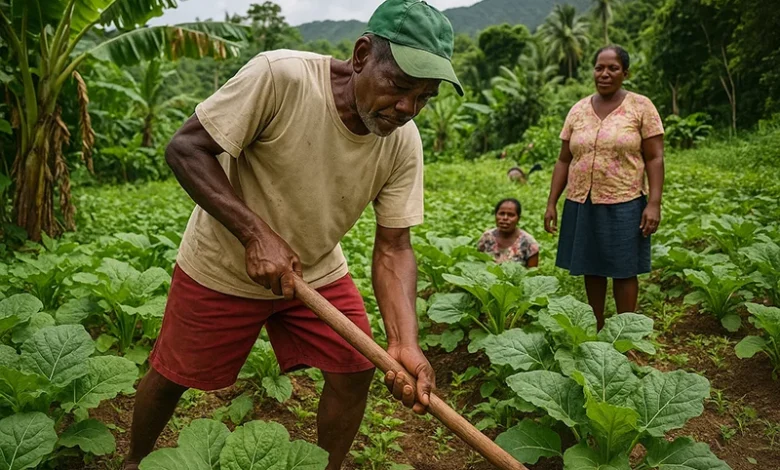Subsistence Farming in Dominica

Subsistence farming in Dominica remains a core aspect of the island’s agricultural identity, practised primarily by rural families who cultivate small plots for household consumption. The rugged landscape and fertile volcanic soils support this traditional method, which is deeply embedded in the Dominican economic and cultural heritage.
Historical Context and Practices of Subsistence Farming in Dominica
Historically, subsistence farming emerged as a means of survival for formerly enslaved Africans and their descendants, particularly following emancipation in 1834. Without access to large estates, many families turned to interior lands where they could grow root crops, fruits, and vegetables to sustain themselves. These practices not only provided food security but also reinforced family and community ties through shared labor and land stewardship.
Traditional tools and organic techniques were common. Farmers relied on slash-and-burn methods, hand tools, and natural rainfall cycles to manage their farms. While some of these methods have adapted over time, the spirit of self-sufficiency still defines many rural communities, particularly in areas like the Kalinago Territory, the heights of Grand Bay, and interior parts of St. Joseph and Castle Bruce.
Economic Role and Modern Shifts
Subsistence farming contributes to local food availability and buffers rural families against market shocks. Crops such as dasheen, yams, bananas, plantains, tannia, and breadfruit form the backbone of these operations. Livestock, such as chickens, goats, and pigs, are often kept to supplement diets and for ceremonial or community events.
However, recent decades have seen a decline in this lifestyle due to challenges in land tenure, emigration, and youth disengagement. Younger generations are increasingly moving toward urban employment or migrating overseas, leading to a decline in traditional knowledge transmission.
Even so, government programs and NGOs continue to promote household farming through backyard garden initiatives, seed distribution, and climate resilience education. Following Hurricane Maria in 2017, many Dominicans temporarily returned to the land to ensure a stable household food supply, reaffirming the strategic role of subsistence farming in disaster recovery and national resilience.
Environmental and Cultural Importance
While central to rural diets, subsistence farming also nurtures biodiversity by supporting native crops and natural farming systems. Farmers often grow multiple crops on a single plot, practising intercropping that enhances soil fertility and deters pests without relying on chemicals.
Culturally, this form of farming supports the preservation of heritage. Traditional farming rituals, local knowledge of plants, and the role of farming in community life are central to Dominica’s rural identity. Many farmers still plant according to lunar cycles and maintain ancestral techniques that have been passed down for generations.
Challenges and the Way Forward
Subsistence farmers face multiple barriers today: limited access to capital and land titles, poor road infrastructure, unpredictable weather patterns, and ageing populations in rural zones. Climate change has also brought new threats, from intense rainfall to drought conditions.
Support mechanisms must therefore focus on:
- Securing land rights for smallholders
- Improving access to extension services and affordable tools
- Building farm-to-market access without altering traditional lifestyles
- Promoting youth reintegration through incentives and modern agro-technology training
While not the dominant economic force it once was, subsistence farming remains a vital component in Dominica’s sustainable development. Its preservation is not merely nostalgic; it remains a lifeline for many and a cornerstone of ecological and food resilience.




